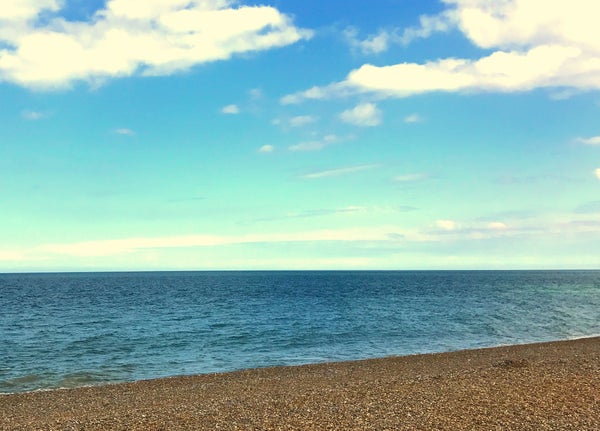This article was published in Scientific American’s former blog network and reflects the views of the author, not necessarily those of Scientific American
Once upon a time it seems that Mars had oceans. But the exact appearance of these bodies of surface water, their sizes and distribution is a matter of intense debate. Most evidence points towards the deep past, some 4 billion years ago as the age when Mars could have held marine environments. Since then the red planet may have been largely cold and arid, with only the occasional shift of climate conditions.
For many geoscientists, some of the most compelling evidence of those old, old watery bodies comes from the topographic and mineralogical signs of ancient shorelines. These so-called ‘contacts’ are seen as geological boundaries, especially in the northern plains of Mars. Crossing thousands of kilometers they are associated with past oceanic basins whose rather romantic names, like Arabia and Deuteronilus, belie their current state of extinction.
But these wiggly contact lines are not without controversy. For one thing, they don’t seem to quite follow a so-called equipotential surface. This is an imaginary surface defined by the local gravitational acceleration – a surefire way to determine how an ocean settles against the gnarly topography of a rocky planet. But on a spinning planet, centripetal acceleration counters gravitational acceleration, so the equipotential surfaces depend to a large degree on where the spin axis of a planet is in relation to its geographic features. Shift the spin axis and you also shift the equator, where planetary spin tends to bulge everything outwards.
On supporting science journalism
If you're enjoying this article, consider supporting our award-winning journalism by subscribing. By purchasing a subscription you are helping to ensure the future of impactful stories about the discoveries and ideas shaping our world today.
It gets even more complicated when there's lots of liquid water. A big ocean loads the planetary crust and alters the mass distribution on a world. Together with geophysical building (like large volcanic upwellings) a planet, much like a spinning top, can wobble as its surface mass shifts around. On Mars it seems likely that a fair amount of True Polar Wander (or TPW) may have happened as a result. TPW means that the spin poles literally shift relative to geography. On early Mars there may have been as much as 30-60 degrees of TPW. That’s like having the geographic North pole on Earth move from the Arctic to as far away as Cairo in Egypt. The resulting changes in centripetal acceleration will alter where shorelines settle.
But, as a new work by Citron, Manga, & Hemingway in Nature explains, on Mars this raises some questions. One of the biggest, baddest volcanic features on Mars is the Tharsis volcanic province – a vast plateau containing some of the largest shield volcanoes in the solar system. When the Tharsis region formed, starting about 3.7 billion years ago, it would be possible for later-forming oceans to drive the needed TPW to explain their shoreline locations. Except, for this to all work Tharsis would have had to be a long way from the equator, and other evidence suggests that it was very close to the equator; where its massive bulk would in effect prevent any later TPW due to new oceans.
The authors propose a solution: have some of the oceans form early, 4 billion years ago and before Tharsis. Then, as the volcanic structure pushed its way onto the surface of Mars, like a nasty set of pimples, it would have changed the topography and caused its own TPW. The result would be a set of shorelines that make more sense. Older oceans (like Arabia) would be less anomalous, and later oceans (like Deuteronilus at about 3.6 billion years ago) would still fit the post-Tharsis landscape.
This timing also means that the size and evolution of oceans on early Mars could be tightly related to huge volcanic events - either reducing the amount of water or perhaps increasing it as outgassed material condensed.
In other words, the shorelines on Mars are probably giving us critical insight to when these ancient oceans formed and existed. That information, if it can be supported by other data on ages and geophysical events, helps us build a more complete picture of the environment on Mars four billion years ago. A time when it is conceivable that life was emerging for the first time in the solar system.
